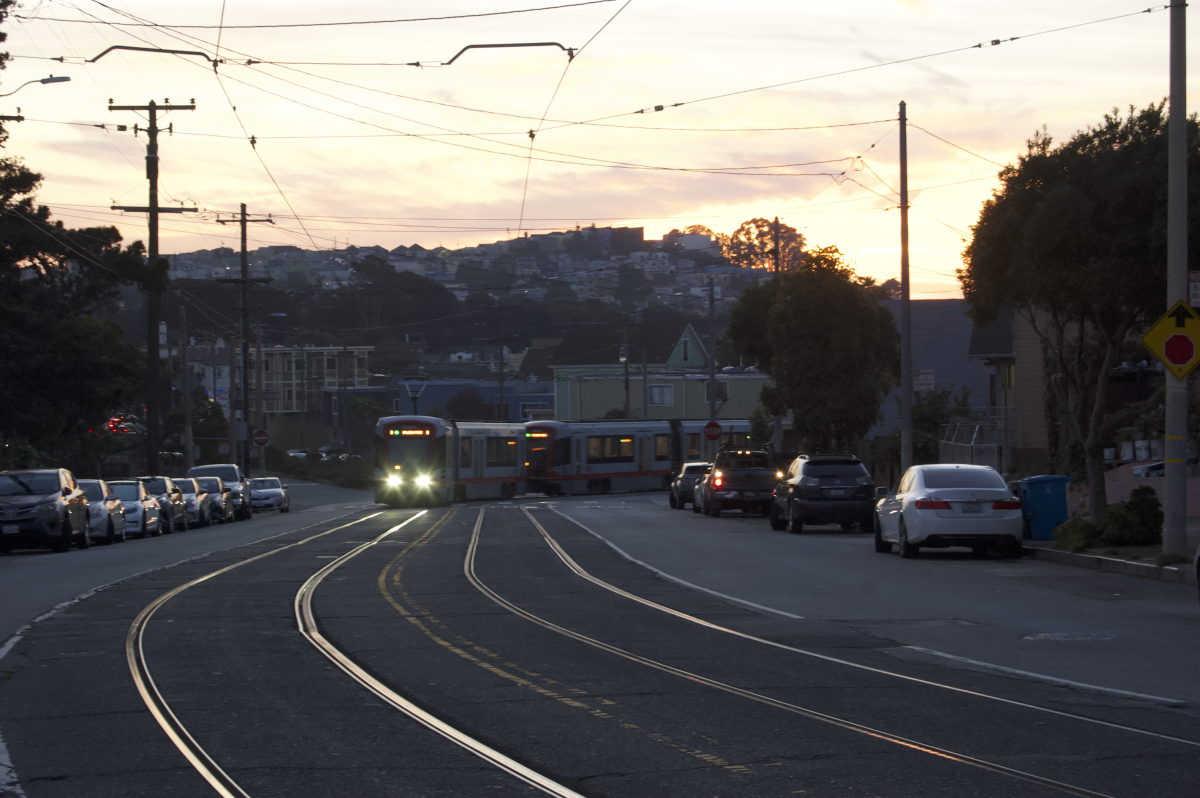
By Henry Crowell
No matter the mayor or the state of the city, Muni service has been incrementally reduced since 2005. Next year, these cuts could become significantly larger if we don’t do something about them now.
From midday trips being reduced to entire routes being severed, Muni has had to cut corners, and San Franciscans are the victims of a failure by our government officials to fund what is arguably the backbone of the city.
Although Muni has been able to stave off a major reduction in service through shuffling things around and the aforementioned corner-cutting, that major blow may be coming soon if we don’t act. SFMTA is facing a $300 million annual budget deficit starting in July of 2026, which could mean many things for transit in San Francisco, not just Muni. All of which would be bad.
Former riders of the 53-Southern Heights, 26-Valencia,10-Townsend, and 3-Jackson are all too familiar with the predicament at hand. The 53 and 26 were discontinued in 2009 in the wake of a deficit, brought on in part by the 2008 financial crisis, as well as general budget constraints, while the 10 and 3 were taken out of service in April 2020 during the onset of the COVID-19 pandemic and were never brought back.
And while other lines have avoided deletion, they have had their hours cut and frequency reduced, such as the 33-Ashbury/18th or 31-Balboa, which had their frequency for peak times cut by 5 and 11 minutes respectively, and both routes (along with many others since they were brought back after the pandemic) now end service at 10 P.M. as opposed to midnight.
Next year, the fate that befell those four routes may be the same for many of the lighter-used routes in Muni’s system, as SFMTA states that if they end up having to close the deficit, they will have to:
- Suspend lower-utilized Muni Routes
- Reduce frequencies by up to 50%
- Suspend historic train and cable car service (i.e., the F Market)
- Operate Owl service only between 9 P.M. and 6 A.M.
- Eliminate fare subsidies for seniors, people with disabilities, youth and people with low income
Those are just some of the lowlights of the many actions SFMTA would have to take to eliminate the deficit.
This paints a bleak picture of public transit in San Francisco. BART is facing a similar budget deficit, which, if left unresolved, would force it to close numerous stations, run on hourly frequencies for its individual lines, end service at 9 p.m., and potentially result in no trains running on weekends. All of this would have major consequences for the Bay Area, in particular, traffic congestion, as BART’s “Role in the Region” study found that “drivers could expect to spend an extra one to nineteen hours a week stuck in traffic in a world where BART no longer exists.”
There is, however, a light at the end of the tunnel. Gov. Gavin Newsom signed Senate Bill 63 on Monday, Oct. 13, which opens pathways for a ballot measure to shore up transit funding in the city. This brings it one step closer to being voted on by San Franciscans, and Muni and BART are one step closer to being at a point where they can look at improving service, rather than figuring out how to survive another round on the chopping block.
